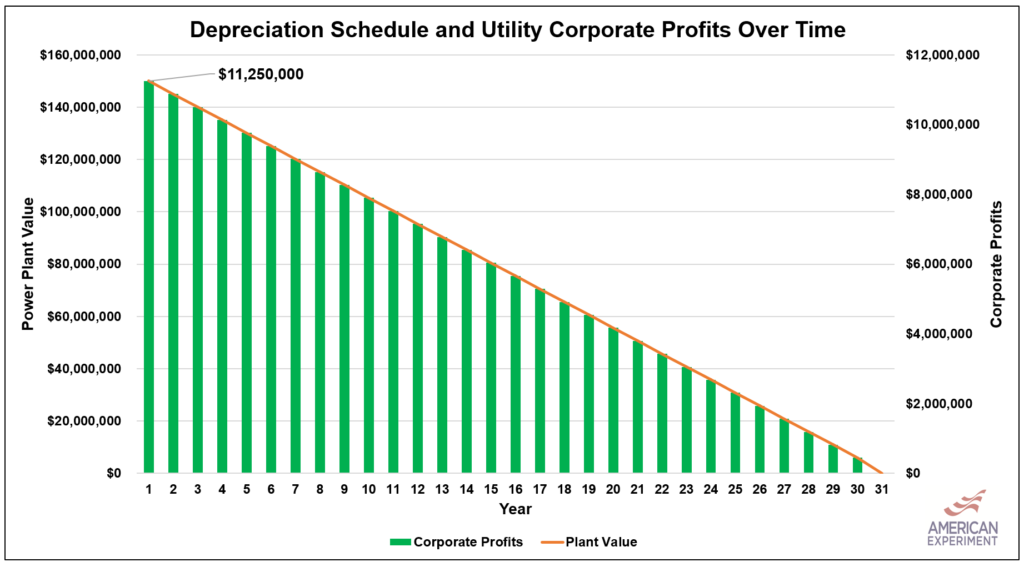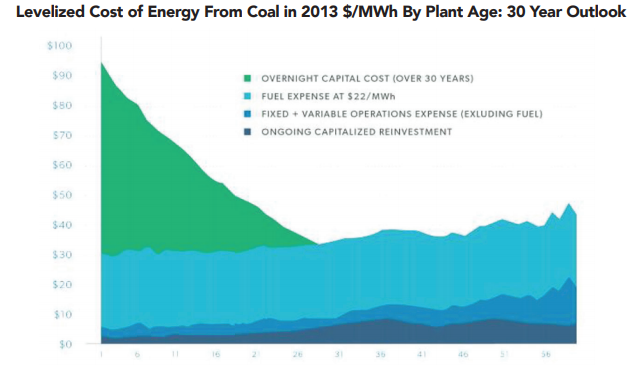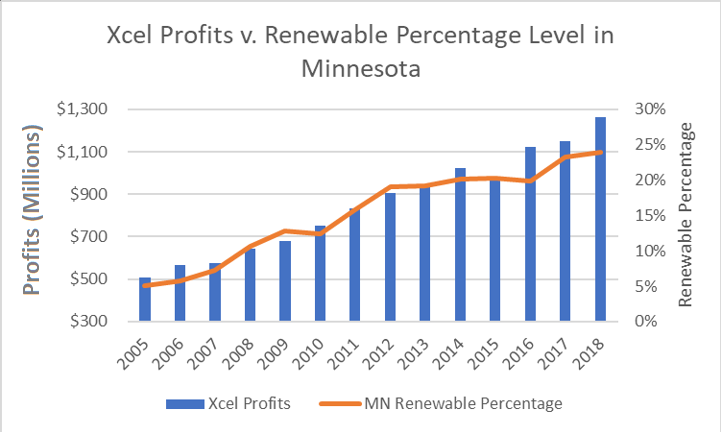Rebutting Regulation: No, Free Market Economics Did Not Win the War On Coal
A recent piece in Regulation titled “Economics Wins the War on Coal” declared the demise of coal was the result of free-market forces, not government regulation and incentives. However, the author clearly does not understand the key issues affecting the electric power industry, today. If he did, he would realize his piece misses most of the picture.
There are three main drivers for coal’s decline, and two of them stem directly from government regulation in the electricity sector. The main drivers killing coal are 1) Obama’s war on coal, 2) Profit-seeking at government-approved-monopoly utility companies, and 3) low natural gas prices.
Obama’s War on Coal
The phrase “war on coal” is often derided by ivory-tower types, but President Obama’s war on coal was real, and it was effective.
I wrote a four-part series about the war on coal and the harm it inflicted on ratepayers when I was a research fellow at The Heartland Institute. During the Obama years, there were more than nine regulations that hamstrung the coal industry. Chief among these regulations was the Clean Power Plan (CPP), and the addition of carbon dioxide to the New Source Review (NSR) regulations.
New Source Review Standards (NSR)
Adding carbon dioxide to the NSR regulations was subtle but significant because it affects the decisions of coal plant owners to retrofit or retire. The delay, cost, and uncertainty associated with obtaining an NSR permit make it difficult for power plant owners to know whether enhancements in plant efficiency will be worth the effort. Rather than risk triggering NSR reviews to upgrade existing coal facilities, many electric utilities switched to natural gas or simply retired their coal units.
Clean Power Plan
The Clean Power Plan was to be the Obama administration’s signature climate change initiative. Its purpose was to reduce carbon dioxide emissions from existing power plants across the country to 32 percent below 2005 levels by 2030 by shutting down coal-fired power plants. The rules never formally took effect because a February 2016 U.S. Supreme Court decision in West Virginia, et al. v. EPA, et al. put the initiative on hold.
While the Clean Power Plan never took effect, it sent a strong message to state governments and the regulatory bodies that govern the decisions of government-approved electric utilities in many states: the federal government will regulate your coal plants out of existence, so plan accordingly.
Around this time, electric utilities and wind and solar advocates began to run in the same circles. In Minnesota, Xcel Energy CEO Ben Fowke and environmentalists helped craft Obama’s CPP. Traditionally rivals, these two stakeholders have joined sides to shut down their coal plants and push for wind, solar, and out of necessity, natural gas, to bolster monopoly utility profits at the expense of American families with no option to escape rising costs.
Seeking Profits: There Is No Free Market For Electricity
The single most important thing to know about electricity policy is that there is no free market for electricity, and there may never be. This is the most important factor driving coal plant closures today and the original author appears to have no idea this dynamic exists.
Electric companies in most U.S. states aren’t private companies. They are government-approved monopoly utilities. This means consumers have no freedom to change providers if costs increase. It also has important implications for how these companies make money.
Because monopoly utilities have a guaranteed market share, state regulators, not the market, set the cost of electricity and monopoly utilities are not allowed to make a profit on the electricity they sell. Instead, they operate under a “cost of service” business model in which the companies are guaranteed to make enough money to cover their operating expenses, plus a profit margin (typically 10 percent) that is approved by government regulators.
In this system, utility companies earn a guaranteed profit when they spend money on capital assets such as power plants, transmission lines, and even new corporate offices. This system often encourages utility companies to spend as much as possible to increase their corporate profits.

However, the amount of profit utilities make on new assets declines every year as an asset depreciates, which means as plants get older, utilities make less money, as you can see in the chart below.

As a plant pays off its upfront financing costs, or “mortgage,” it can produce electricity at a lower cost than a new plant, as the graphic below from the Institute for Energy Research shows. This is a great benefit for ratepayers because it means that they reap the rewards of a fully paid-off power plant, much like a family reaps the reward of paying off the mortgage on their house.
The only stakeholder that doesn’t benefit from lower electricity prices from existing coal plants is the utility company, which makes no guaranteed corporate profits. As a result, monopoly utilities have a strong financial incentive to retire depreciated coal plants and build wind, solar, and natural gas power plants to increase their profits and stock prices.
The graph below shows Xcel Energy’s corporate profits have marched lockstep with renewable energy generation in the state.

The rush to retire existing coal plants and build wind, solar, and natural gas in states with monopoly utilities is not the triumph of any sort of free market economics, it is the definition of crony capitalism and regulatory capture.
Add to this the fact that 38 states have some form of renewable energy mandate, which requires the use of wind and solar, and it becomes impossible to argue that free market economics, and not regulations and perverse incentive structures, that are causing the main shift away from coal plants.
Fracking Cushions the Transition, It Doesn’t Drive It
There is no doubt that hydraulic fracturing has produced an enormous amount of affordable natural gas, and this should be celebrated as a great triumph of American ingenuity (my Twitter handle is @thefrackingguy, after all). However, it would be a mistake to think that low natural gas prices, alone are driving the transition away from coal.
In some states, low gas prices are certainly, and fairly, eating into coal’s market share, and in others it isn’t. In Pennsylvania, which is part of PJM, a freer electricity market than many others, gas has made inroads because the wealth of cheap gas in the Marcellus shale.
In areas with monopoly utility companies, low natural gas prices have provided a convenient excuse to build new power plants. It is also easier to increase or decrease electricity production at natural gas plants to meet supply and demand than it is at coal plants. As a result, adding natural gas plants facilitates more wind and solar facilities on the grid. This is bad for consumers, but it is great for utilities.
Conclusion
Our electricity markets are overregulated. Politicians destroy winners and prop up losers with regulations, mandates and subsidies, and crony capitalism handles the rest. The author’s article showed a stunning lack of awareness of the most important dynamics in electricity markets today.